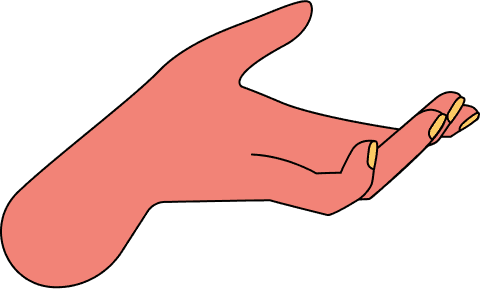First Click Testing
First Click Testing is a usability testing method that evaluates where users click first when attempting to complete a specific task on a website, app, or interface.
What is a First Click Testing?
First Click Testing is a usability testing method that focuses on analyzing where a user clicks first when they attempt to complete a specific task on a website, app, or digital interface.
It helps answer the question:
“Does the user instinctively know where to click to begin solving a task?”
If the user’s first click is correct, studies show they are twice as likely to complete the task successfully.
How it can be useful?
Type of First Click Testing
First click testing is a usability technique used to evaluate how easily users can navigate an interface to complete a task—focusing on where they click first. The first click is considered highly predictive of task success. There are a few different types or approaches to conducting first click testing depending on the format and environment:
Static Image-Based Testing
How it works: Users are shown a static image or screenshot of an interface (like a website or app) and asked where they would click to complete a task.
Tools: Optimal Workshop (Chalkmark), UsabilityHub, Maze.
Good for: Testing early-stage design concepts, wireframes, or comparing multiple layout versions.
Live Interface Testing
How it works: Users interact with a functioning prototype or live product. The first click is tracked in real-time.
Tools: Hotjar, FullStory, Crazy Egg (with heatmaps), user testing platforms.
Good for: Real-world interaction testing, understanding behavior in context.
Task-Based First Click Testing
How it works: Users are given a specific task (e.g., "Find out how to contact customer support") and their first click is recorded.
Usually embedded in both image-based or live-interface tests, but it's the task-driven structure that defines this variant.
Good for: Measuring user intuition for task flows, comparing task success across designs.
Mobile-First Click Testing
How it works: Similar to image or prototype-based testing but optimized for mobile devices.
Focus: Testing thumb reachability, visibility, and tap targets on small screens.
Good for: Ensuring mobile usability, especially for app interfaces or responsive web design.
Key Startpoints
Requirements
Goal
Understand what you're testing: navigation flow, menu clarity, button placement, label understanding, etc.
Define Tasks
The tasks should mimic real user goals. Keep instructions simple, task-oriented, and realistic. Avoid biasing language like “click the green button.”
Interface Versions (Design Assets)
Static images (screenshots, wireframes, mockups)
Clickable prototypes (Figma, Adobe XD, InVision)
Live site (for in-context testing)
Target Audience
Define the type and number of participants
Ideal users (demographics, behavior)
Internal testers (for early-stage testing)
Recommended sample size: at least 20-50 users per variant for reliability
Preparations
Create clickable mockups or screens
Define measurable tasks and success paths
Determine success criteria (e.g., first click on intended area)
Participants
Recruit 5–10 users from the target audience
Optional: screen users for relevant demographics
Instructions
Explain the goal of each task
Avoid leading instructions (“Click on the ‘Contact Us’ page” vs “Find where you’d go to get help”)
Encourage thinking out loud, if moderated
How to perform First Click Testing?
Analysis
Identify common strategies
Group users based on how they approached the task. Look for patterns in:
Where users clicked first
Why they made that choice (from post-task comments or observation)
How long it took them to decide
Purpose of this Analysis
Clear navigation paths
Misleading labels or visuals
Unexpected user behaviors
Organize the data into a popular placement matrix
Create a matrix or chart to categorize click behavior:
Click Type
Description
Example
🎯 Correct Click
Clicked on the expected target
Clicked "Support" to find help
🟡 Near Miss
Close but not ideal
Clicked "FAQ" instead of "Help"
❌ Misclick
Completely wrong section
Clicked "Blog" to find return info
🤷♂️ No Click / Unsure
Didn’t click or hesitated for a long time
Hovered for 10+ seconds, no action
Then calculate:
% of correct first clicks
Average time-to-first-click
Heatmap density for each area
Tools like UsabilityHub, Maze, or Optimal Workshop will generate these visualizations automatically.
Similarity Matrix and Wrap-Up
If testing multiple designs or layouts, you can build a similarity matrix to compare which version had:
Higher % of successful first clicks
Shorter click times
Fewer misclicks or hesitation
This helps determine:
Which design is more intuitive
Which elements need better labels, hierarchy, or placement
Whether users interpret icons or text as intended
Pros
Simple to set up, it doesn’t require complex tools or environments.
Helps validate navigation or layout decisions early.
Fast turnaround makes it ideal for iterative design.
Visual results can be achieved easily using heatmaps.
Useful even before development begins.
Ensures your structure and hierarchy make sense to users.
Useful even before development begins.
Low cost research method, ensures your structure and hierarchy make sense to users.
Cons
Measure the first step but doesn’t evaluate the full user journey or task completion.
Lacks real-world content, user might miss distractions, emotions or multitasking effects.
Results just include surface-level insights; they don’t uncover why users behave the way they do (unless combined with interviews or follow-ups).
Needs additional testing to explore deeper issues.
Doesn’t account for dynamic elements like dropdowns or hover states.
Conclusions
First Click Testing is a powerful, lightweight usability method that focuses on one of the most critical moments in user interaction—the very first click. It helps designers understand whether users can intuitively navigate an interface and take the right initial step toward completing a task.
By revealing how users interpret structure, labels, and layout, first click testing provides actionable insights into the clarity and usability of your design. It’s fast, cost-effective, and ideal for early-stage validation or quick iterations.
While it doesn’t replace full usability testing, it complements it by pinpointing navigation pain points, reducing misclicks, and improving overall UX flow. When combined with smart task design and thoughtful analysis, first click testing can significantly improve how users experience and interact with digital products.







